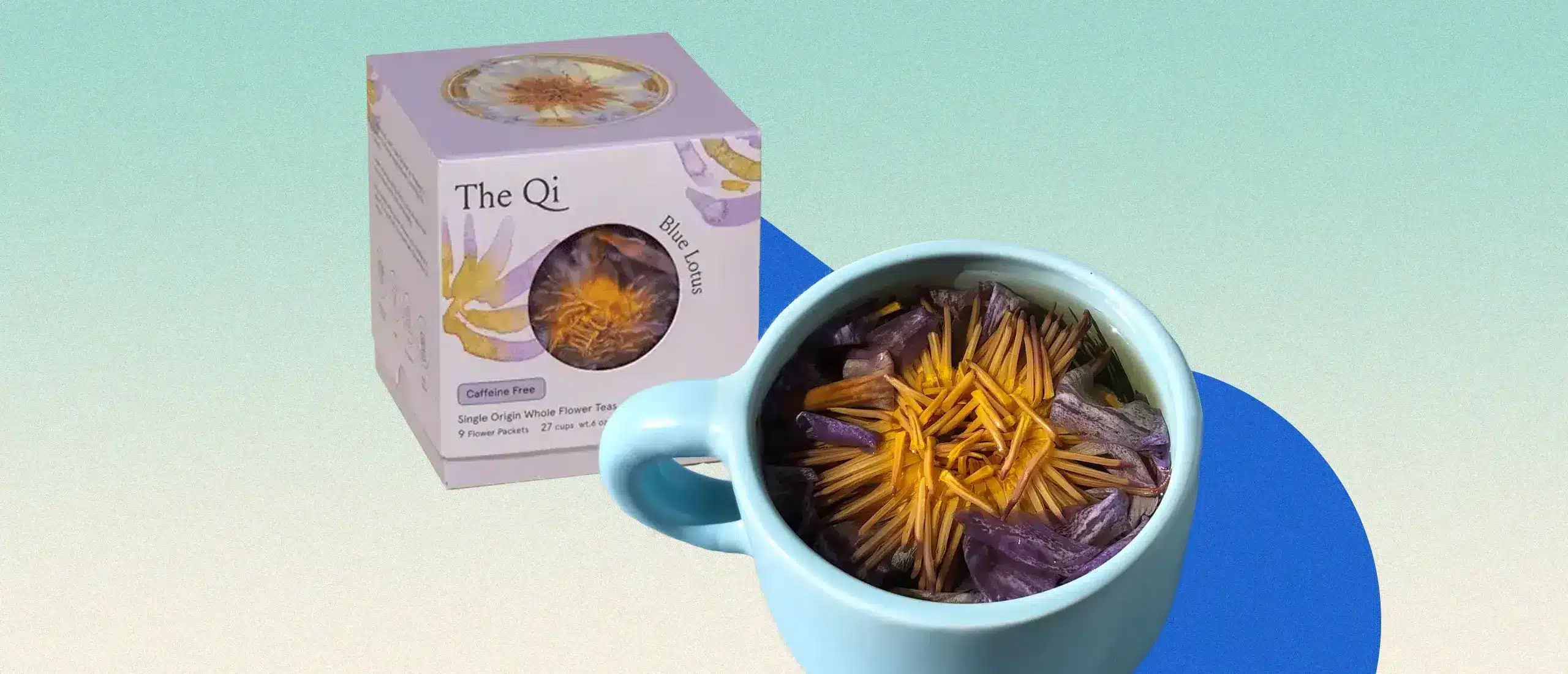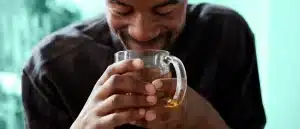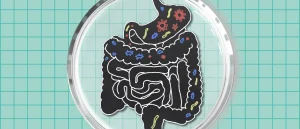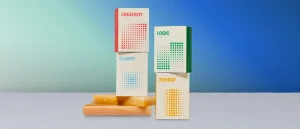Why Is Everyone Drinking Blue Lotus Tea? I Tried It So You Don’t Have To
Fast Facts
- Made with the leaves of an Egyptian water lily, Blue lotus tea is a drink that’s said to have a number of healthful qualities
- May promote euphoric feelings, aid with erectile dysfunction, encourage calmness, and potentially lower risk of developing chronic disease
- After trying it, we think it may be best deployed as an occasional sleep aid
Over the course of human history, few things are constant. One of them: people are always looking for the next thing to give them a nice “high.” This evolutionary trait has led to a piqued interest in blue lotus tea, a drink made from Egyptian water lily.
While there’s an abundance of gummies, oils, edibles, and topicals containing CBD, THC, CBG, and other cannabinoids to choose from, it seems that consumers are ready for the next thing that can help them relax.
Could blue lotus tea be a good replacement for cannabinoids?
To help you decide if blue lotus tea is right for you, I tried The Qi’s Blue Lotus Tea it to see if it’s worth the hype.
What Is Blue Lotus Tea?
So, what the heck is blue lotus tea?
To understand this allegedly aphrodisiac tea, we have to break down what blue lotus is.
Blue lotus, or Nymphaea caerulea (Nymphaeaceae), is an Egyptian water lily found in lakes and rivers worldwide. The flower is heavily intertwined with Egyptian culture and is presumed to have health and spiritual benefits when consumed as tea or made into a tincture (1). Tinctures being concentrated forms of one or more herbs (2).
While it may seem like blue lotus is just your average plant, it has some unique properties that make it comparable to cannabinoids.
As a side note, it’s important to mention that blue lotus is not currently approved nor regulated by the Food and Drug Administration (FDA) for human consumption, so be careful when shopping for this flower tea(3).
Now that we’ve covered the necessary background information on the blue lotus plant let’s explore the potential benefits of blue lotus tea.
What Does Blue Lotus Tea Do? (Effects)
Can give you a happy, euphoric feeling
Blue lotus contains apomorphine and nuciferine. Apomorphine is a psychoactive compound and dopamine agonist. This means it replaces dopamine, giving a feeling of euphoria (4). This effect alone is why some consider blue lotus tea a natural aphrodisiac.
Aid with erectile dysfunction
Drinking blue lotus tea might help you in the bedroom. The apomorphine within this flower may also increase blood pressure, allowing more blood flow to the penis for better erectile function (5).
Encourage calmness
Nuciferine is another compound that has been shown to have antipsychotic effects (6). With this in mind, you may experience mild sedation that can calm your mind and body, which can help you sleep better (7).
May lower your risk of developing chronic diseases
Blue lotus contains antioxidants such as flavonoids, quercetin, kaempferol, and myricetin (8). Antioxidants can prevent or delay certain types of cell damage by neutralizing free radicals. Because of this, eating a diet high in antioxidants may lower your risk of certain chronic conditions (9).
It’s important to note that research doesn’t directly link blue lotus to reduced risk of chronic diseases, so to be on the safe side, continue eating enough vegetables and fruits.
What It’s Like to Drink Blue Lotus Tea
As we mentioned earlier, we had to give blue lotus tea a try for ourselves.
I tried The Qi Blue Lotus Teas. They came in a nicely packaged box with eight individual packets containing 1.7 grams, or 0.6 ounces, of the Single Origin Whole Flower Teas, which were the dried blue lotus flowers.
In addition to the flower packets, the manufacturer also included instructions on how to brew the tea, three recipes, including one for a facial steam, and a pair of tongs.
As recommended by the manufacturer, I used a glass cup to make the tea. Now, instead of brewing a pot of water on the stove, I used my Keurig to heat the water, which worked just fine for me.
I placed the dried flowers in my cup before starting my Keurig to get the hot water for my tea.
Once my Keurig was done brewing, I followed the instructions provided by letting my tea steep for three minutes.
When it seemed ready to drink, I gave it a quick sip. I left the flowers in my glass, but you can remove or strain them.
The tea has a strong, earthy taste. It wasn’t too overpowering, but because I prefer a little bit of sweetness, I added about a teaspoon or two of natural honey.
The honey complimented the tea very well, so I highly suggest trying it with honey if you don’t like it in its natural state.
Within an hour or so of drinking about a cup of blue lotus tea, I got very sleepy. It probably wasn’t the best idea to drink it mid-morning, so if you want to avoid this, drink it before bed.
This effect was the strongest within the first hour of drinking the tea but slowly weaned off over the next couple of hours.
After trying blue lotus tea, I highly recommend it as a sleep aid. However, to get the aphrodisiac effects, you may have to drink more than one cup of tea.
The Bottom Line
Blue lotus tea has been around for thousands of years and used for many reasons, but for most people’s needs, it’s probably best used as a sleep aid and, if you drink significantly more of it, as a light aphrodisiac.












